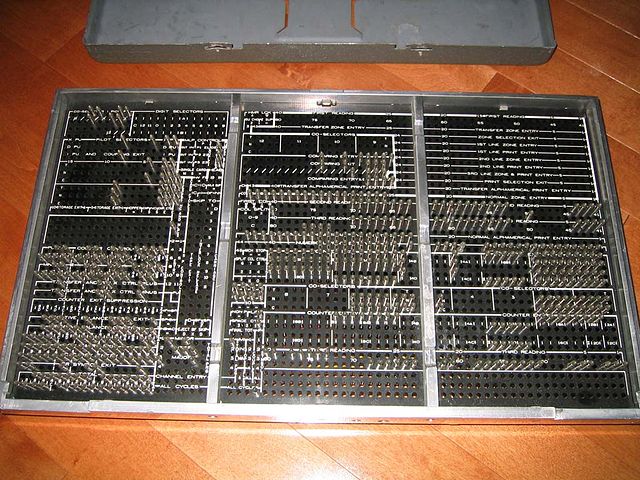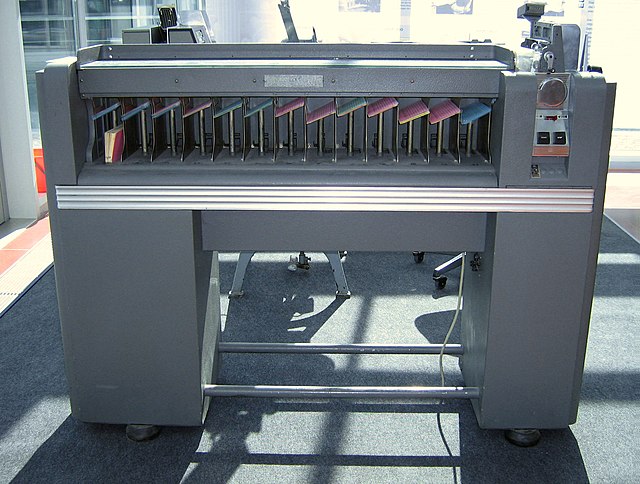A plugboard or control panel is an array of jacks or sockets into which patch cords can be inserted to complete an electrical circuit. Control panels are sometimes used to direct the operation of unit record equipment, cipher machines, and early computers. The array of holes is often contained in a flat removable panel that can be inserted into a machine and pressed against an array of contacts. This allows the machine to be quickly switched between different applications.
IBM 402 accounting machine control panel wiring. This board was labeled "profit & loss summary."
Reverse side of the same 402 plugboard, showing the pins that make contact with the machine's internal wiring. The holes were called hubs.
An operator inserting a control panel into an IBM 407 Accounting Machine Another panel is on the floor nearby.
An 80-column punched card. Rows 0 to 9 are labeled. The 12 row, on top, has one punch in column 7. The 11 row, below it is not punched on this card. As cards passed through a read station, usually 9-edge (bottom edge) first, wire brushes, one for each column, would make contact through the holes.
Starting at the end of the nineteenth century, well before the advent of electronic computers, data processing was performed using electromechanical machines collectively referred to as unit record equipment, electric accounting machines (EAM) or tabulating machines.
Unit record machines came to be as ubiquitous in industry and government in the first two-thirds of the twentieth century as computers became in the last third. They allowed large volume, sophisticated data-processing tasks to be accomplished before electronic computers were invented and while they were still in their infancy. This data processing was accomplished by processing punched cards through various unit record machines in a carefully choreographed progression. This progression, or flow, from machine to machine was often planned and documented with detailed flowcharts that used standardized symbols for documents and the various machine functions. All but the earliest machines had high-speed mechanical feeders to process cards at rates from around 100 to 2,000 per minute, sensing punched holes with mechanical, electrical, or, later, optical sensors. The operation of many machines was directed by the use of a removable plugboard, control panel, or connection box. Initially all machines were manual or electromechanical. The first use of an electronic component was in 1937 when a photocell was used in a Social Security bill-feed machine. Electronic components were used on other machines beginning in the late 1940s.

Replica of Hollerith tabulating machine with sorting box, circa 1890. The "sorting box" was an adjunct to, and controlled by, the tabulator. The "sorter", an independent machine, was a later development.
Hollerith machine in use at the London School of Economics in 1964
IBM 029 Card Punch.
IBM 082 Sorter.








